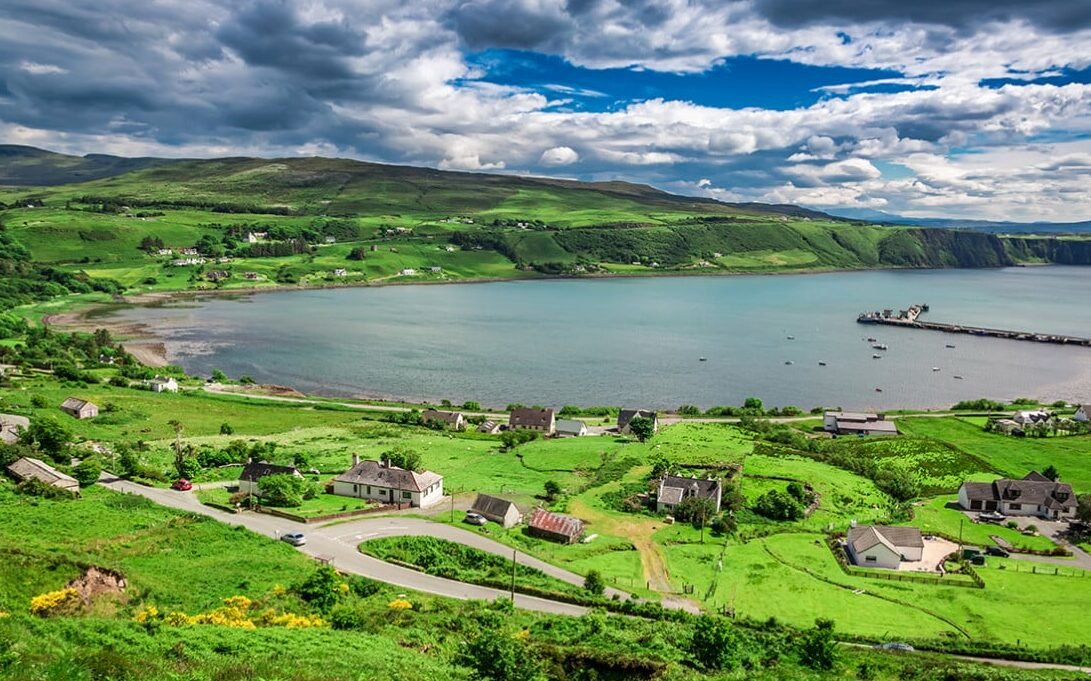
Isle of Skye Adventure: Travel Tips. lies on the west coast of the Hebrides and covers 1,656 sq km (80 km long and 40 km wide).
It is home to a beautiful landscape of rugged mountains, sea cliffs and picturesque lakes. It also boasts buildings that are 800 years old.
Table of Contents
Why is Isle of Skye so famous?
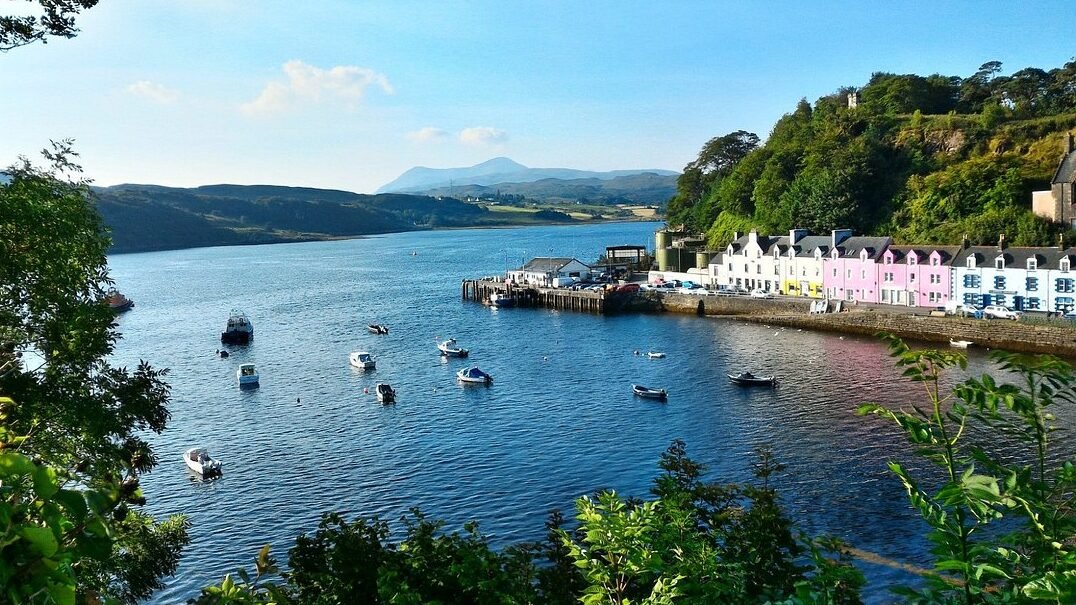
The Isle of Skye is nestled off the west coast of the Scottish mainland near the Inner Hebrides. It is Scotland’s second largest archipelago after the Isle of Lewis and Harris.
It is home to stunning cliffs, tranquil lakes and beautiful seascapes. It is known for its dramatic landscape and rich cultural heritage. Here are some key details about its location:
It covers an area of 1,656 square kilometres. It is approximately 80 kilometres long from north to south and 40 kilometres wide at its widest point. The highest peak on Skye is Sgurr Alasdair, which reaches a height of 992 metres (3,255 feet).
Tucked away in the rugged Scottish Highlands, the Isle of Skye is a destination that boasts rugged mountains, rolling moors, dramatic sea cliffs and picturesque lakes.
The islands are a haven for photographers and nature lovers and hikers with their mystical charm and breathtaking scenery.
Famous natural sites such as the Old Man of Storr, the Quiraing and the Fairy Pools attract visitors with their breathtaking beauty and unique geological formations.
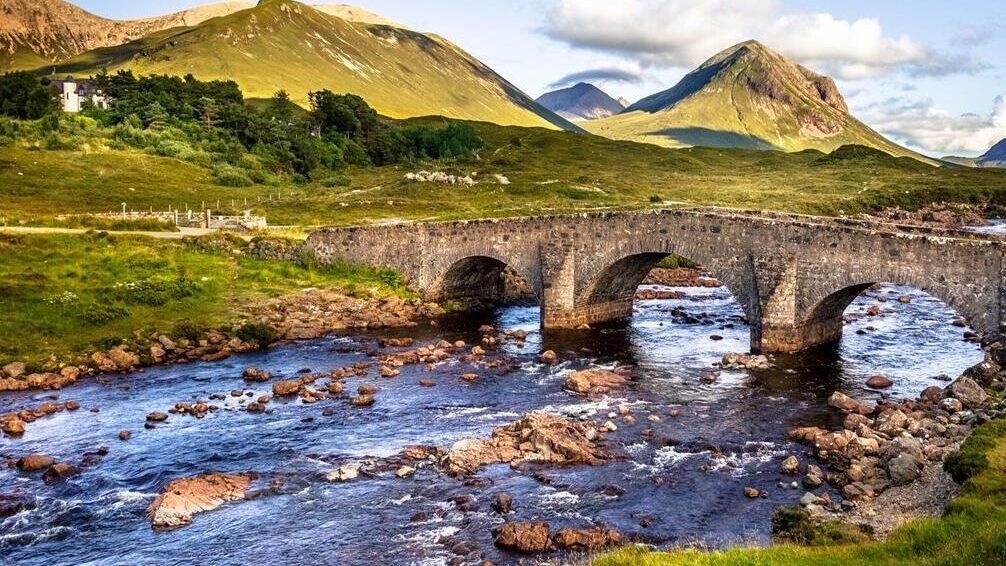
The history of the island is linked to tales of clans, Norse invasions and Jacobite rebellions, hiking in the Cuillin Mountains is also available here which offer challenging, hiking experiences for enthusiasts.
The Isle of Skye has white coral beaches like Clegane, which are beautifully lapped with turquoise waters.
Some of the wildlife to be seen here include golden eagles, red deer, otters and seals. The flora also includes vibrant wild flowers, heather-covered hills.
Villages, ports and other small settlements like Portree offer a glimpse of cultural heritage. The ever-changing light creates conditions that enhance the beauty of the island. Travelers describe it as one of the most beautiful places they have ever seen.
Mystical atmosphere: Skye is often linked to Scottish folklore and fairy tales, which add a layer of mystery and charm to the island. The Fairy Pools and Fairy Glens are just a few examples that boost the island’s mythical reputation.
How to visit Isle of Skye
By Car
The easiest way to explore Skye is by car. It takes about 5-6 hours to drive from Glasgow or Edinburgh to Skye. Take the A82 road through the Scottish Highlands, passing through Glencoe and Fort William. Continue onto the A87, which leads directly to the Skye Bridge at Kyle of Lochalsh.
From Inverness: It takes about 2.5 hours to drive from Inverness to Skye via the A82 and A87 roads
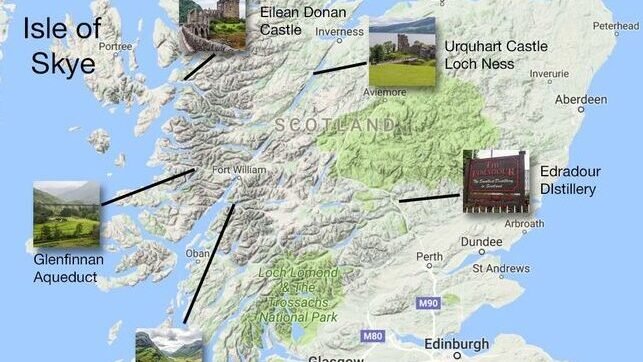
Train and bus
From Inverness, you can take a train to Kyle of Lochalsh, which takes about 2.5 hours. You can also take a train from Glasgow or Edinburgh to Mallaig, then take a ferry to Armadale on Skye. ferry crossing about 45 minutes.
If you are by bus, check the bus schedule first as services can be infrequent, especially in the off-peak season. Car hire is available in major towns and airports.
By plane
By planethe nearest airports are in Inverness and Glasgow. From either airport, you can rent a car to reach Skye.
The island’s roads are well maintained, but single-track roads may be encountered in more remote areas
What difficulties can you face while traveling?

| Category | Difficulty | Description | Tips for Overcoming |
| Weather Conditions | Unpredictable Weather | Sudden rain, strong winds, and fog can impact travel plans and outdoor activities. | Check weather forecasts, pack layers and waterproof clothing. |
| Visibility Issues | Fog and rain can reduce visibility, making driving and hiking more difficult. | Avoid driving in poor visibility, use headlights, and drive cautiously. | |
| Transportation | Limited Public Transport | Infrequent buses, especially in remote areas, making reliance on public transport challenging. | Plan routes in advance, check bus schedules, and consider renting a car. |
| Narrow, Winding Roads | Single-track roads can be difficult to navigate, especially during peak seasons. | Familiarize with single-track driving rules, drive slowly, and use passing places. | |
| Car Rentals | Limited availability of rental cars, especially during peak season. | Book rental cars well in advance. | |
| Accommodation | High Demand | Accommodation can be fully booked well in advance. | Book accommodation as early as possible. |
| High Prices | Accommodation prices can be high during peak tourist season. | Consider visiting during off-peak times and look for alternative lodging options. | |
| Overcrowding | Popular Attractions | Major attractions can become very crowded, detracting from the experience. | Visit early in the morning or late in the afternoon, and explore lesser-known sites. |
| Limited Facilities | Strain on parking lots, restrooms, and restaurants due to overcrowding. | Plan visits during less busy times and have backup plans. | |
| Accessibility | Remote Locations | Some attractions are in remote areas, requiring long drives on narrow roads. | Plan routes carefully, ensure your vehicle is in good condition. |
| Physical Demands | Many attractions involve hiking or walking on uneven terrain. | Wear proper hiking gear, and assess physical abilities before setting out. | |
| Service Limitations | Healthcare Services | Limited healthcare facilities, challenging access to medical care. | Carry a first aid kit and have travel insurance. |
| Limited Dining Options | Limited dining options outside major towns. | Make restaurant reservations in advance, and carry snacks. | |
| Connectivity Issues | Poor Mobile Signal | Weak or non-existent mobile signal in some areas. | Carry a physical map, inform someone about your itinerary. |
| Limited Wi-Fi | Limited Wi-Fi availability, especially in rural accommodations. | Download necessary information and maps in advance. | |
| Environmental Impact | Responsible Tourism | High number of visitors can lead to environmental degradation. | Follow Leave No Trace principles, dispose of waste properly, and respect local rules. |
Tips for Overcoming Travel Difficulties
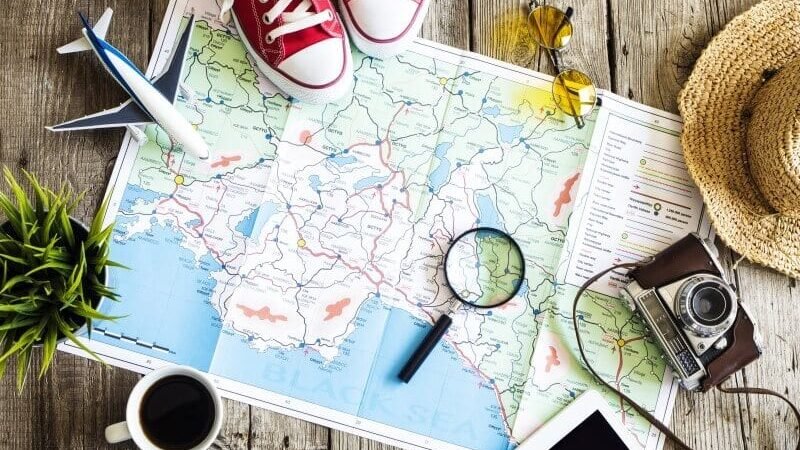
- Plan Ahead: Make accommodation, car rental, and restaurant bookings well in advance.
- Check Weather Forecasts: Be prepared for sudden changes in weather and pack accordingly.
- Drive Carefully: Familiarize yourself with driving on single-track roads and be prepared for narrow, winding routes.
- Travel Off-Peak: Consider visiting during the shoulder seasons (spring and autumn) to avoid the peak tourist crowds.
- Stay Informed: Keep a physical map as a backup due to potential connectivity issues and check local resources for updates on road conditions and transport schedules.
How to book hotel in Isle of Skye

the Isle of Skye in Scotland offers various options for accommodation, including hotels and camping areas. Some popular hotels on the Isle of Skye include:
- The Cuillin Hills Hotel: Located in Portree, offering views of the Cuillin Mountains.
- The Bosville Hotel: Also in Portree, offering stylish accommodations and dining options.
- Skeabost House Hotel: A historic hotel set in beautiful surroundings near Portree.
- Duisdale House Hotel: A boutique hotel with luxurious amenities and scenic views.
For camping, there are several campsites across the island where you can pitch tents or park campervans, such as:
- Glenbrittle Campsite: Located near the Fairy Pools, offering stunning mountain views.
- Sligachan Campsite: Situated near the Sligachan Bridge, a central location ideal for exploring the island.
- Uig Bay Caravan and Campsite: Located in Uig with views over Uig Bay.
It’s advisable to check availability and book in advance, especially during peak tourist seasons on the Isle of Skye.
1. Contact Hotels Directly
- Phone or Email: If you prefer personalized service or have specific questions, contact the hotel directly.
- Special Requests: Discuss any special requirements or requests directly with the hotel staff.
2. Plan Ahead
- Book Early: Especially during peak seasons (spring and summer), accommodations fill up quickly. Booking in advance is recommended.
- Consider Off-Peak Seasons: Visiting during shoulder seasons (autumn and early spring) can offer more availability and better rates.
3. Check Local Listings
- Local Tourism Websites: Websites like VisitScotland.com and IsleofSkye.com list recommended accommodations and provide direct booking links.
- Social Media Groups: Join travel forums and social media groups for recommendations and advice from fellow travelers.

Visit Website: Go to Booking.com.
Search: Enter “Isle of Skye” in the destination field, select dates, and number of guests.
Filter: Use filters for price range, property type, amenities, and guest rating.
Select: Choose a hotel from the list, check details, and read reviews.
Address Isle of Skye
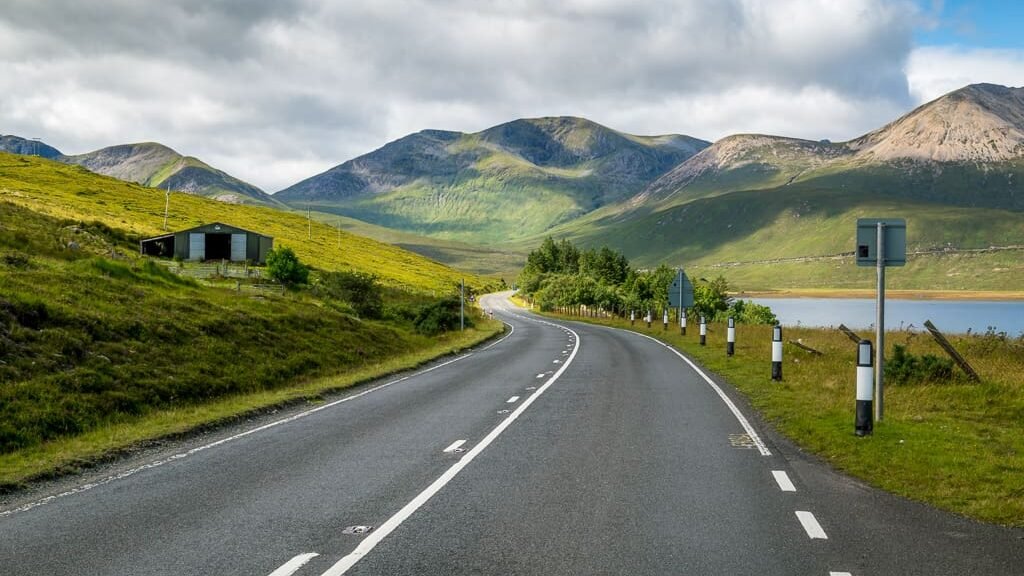
- Tourist Information Centre:
- Portree Visitor Centre
- Address: Bayfield House, Bayfield Rd, Portree IV51 9EL, United Kingdom
- Phone: +44 1478 612137
- Website: VisitScotland Skye
If you want to share your opinion or experience, then definitely write in the comment so that it helps the reader and can know about its beauty
